Ricotta Cavatelli are fresh handmade pasta hailing from Southern Italy and featuring only a few simple ingredients. They freeze really well, are fun to make, and are very versatile. I especially love how rustic they are in appearance. Each piece is uniquely delicious.
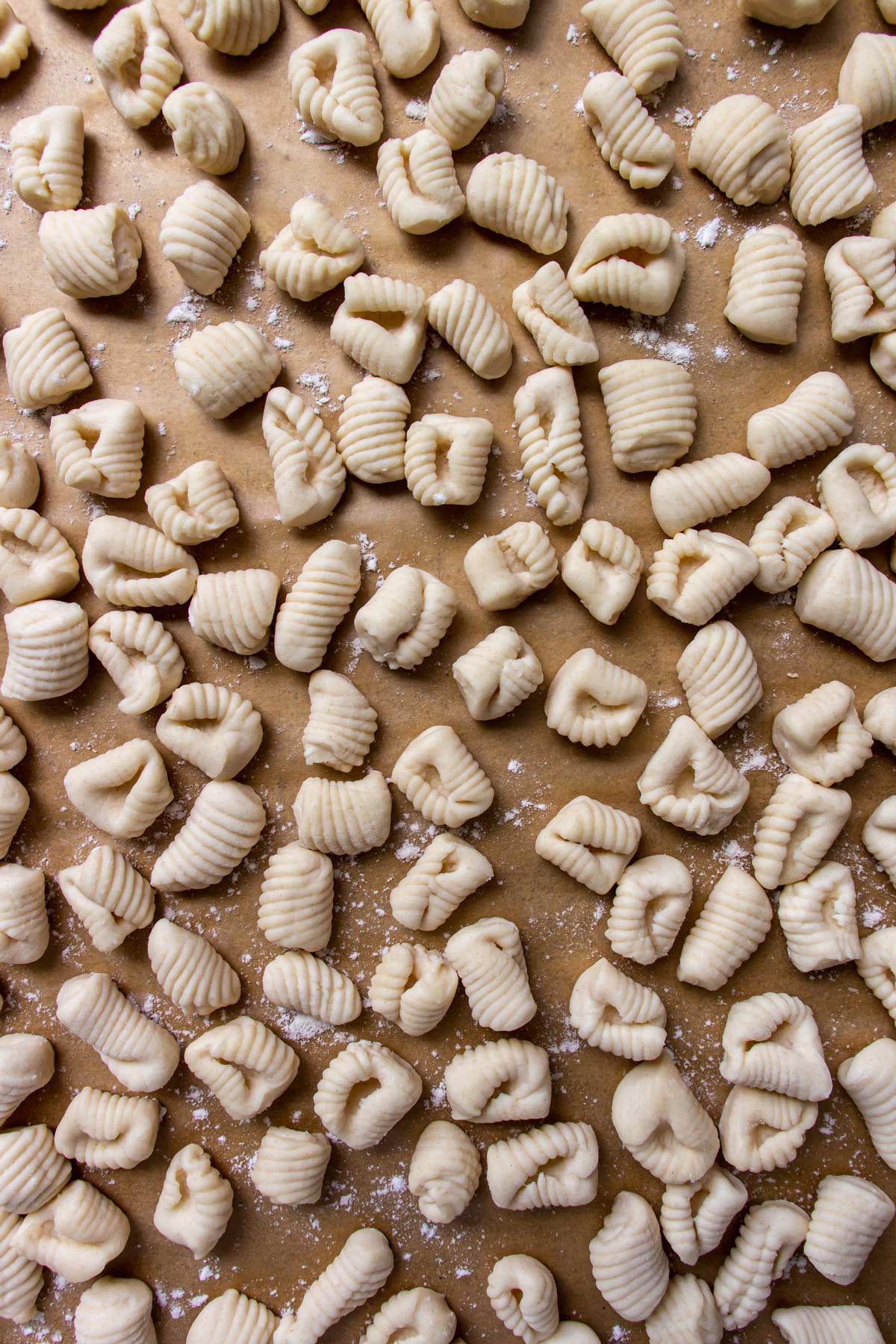
(This recipe was originally published in August 2016, but was updated with new photos and content in 2022).
Cavatelli are basically the gnocchi of Southern Italy. They originate in Molise, but are common throughout many regions in Southern Italy including Abruzzo, Puglia, Campania, Basilicata, Calabria, and Sicily.
The name cavatelli is pronounced cah-vah-TELL-lee and comes from the Italian word cavato, meaning something that is gouged and refers to the indentation or dimple on each dumpling.
Cavatelli are typically made with either semolina flour, yielding firmer and denser dumplings, or a combination of ricotta cheese and regular flour, resulting in slightly softer, more tender dumplings. With that said, ricotta cavatelli are still chewier and less delicate than their softer pillowy gnocchi counterparts from other regions.
Ricotta cavatelli are simple and versatile. They can be served with just about any sauce, including tomato sauce, meat ragù (meat sauce), pesto, brown butter, fonduta (cheese sauce), puttanesca sauce, amatriciana sauce, pink vodka sauce, sautéed garlic and broccoli, and more.
Ingredient notes
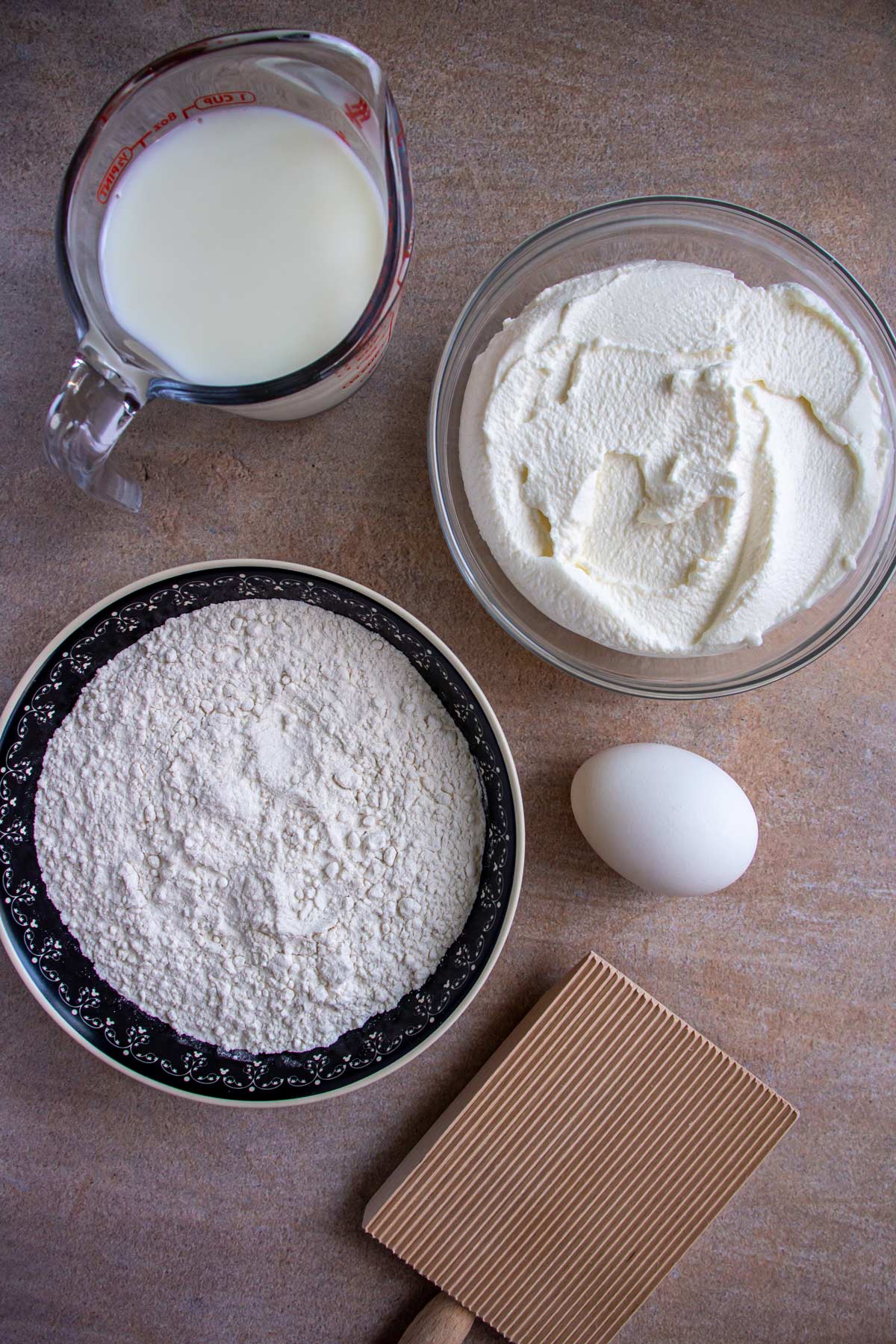
- Flour: Use plain all-purpose flour for these ricotta cavatelli. No need to invest in any special flours to yield excellent results.
- Ricotta Cheese: Use whole-milk ricotta cheese (as opposed to part-skim ricotta cheese) for this recipe. The wetness of ricotta cheese can vary by brands. Ideally, use a ricotta that isn't very watery, otherwise you'll want to strain it in a cheesecloth-lined fine-mesh strainer to remove some of the excess liquid before proceeding with this recipe. I found Supreme brand (local to Rhode Island) to be way too wet for this purpose, and instead preferred to make this with the ricotta cheese I got at Aldi (pictured above).
- Milk: Any kind of milk will work for this recipe (whole, low-fat, skim). You can even replace if it with water if you really need to.
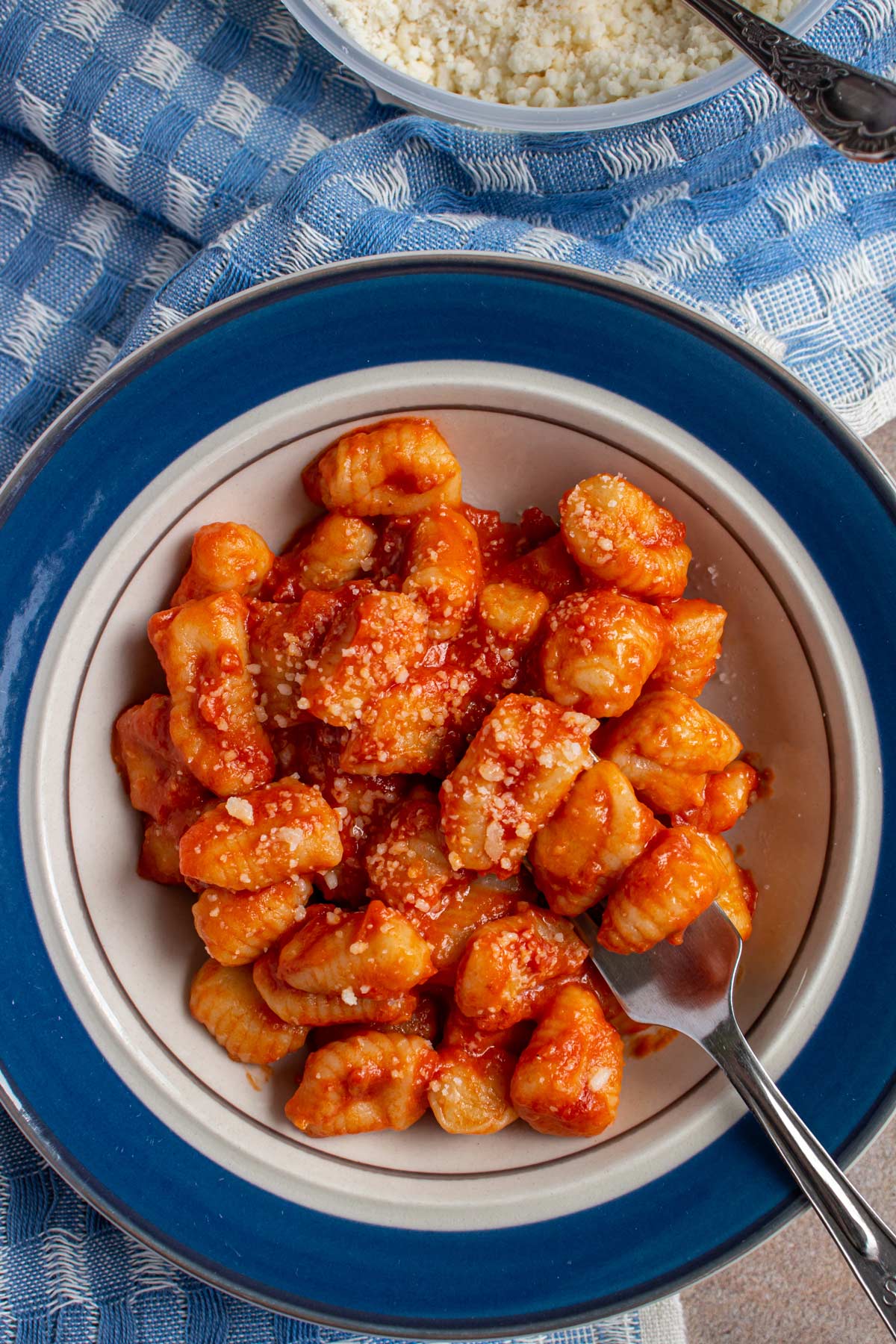
How to make it
In a large bowl or in the bowl of a stand mixer fitted with a dough hook attachment, combine flour, ricotta cheese, milk, egg, and salt.

Knead with your hands or on medium speed in the stand mixer for 10 minutes. The dough should be fairly smooth and will still be a bit sticky.
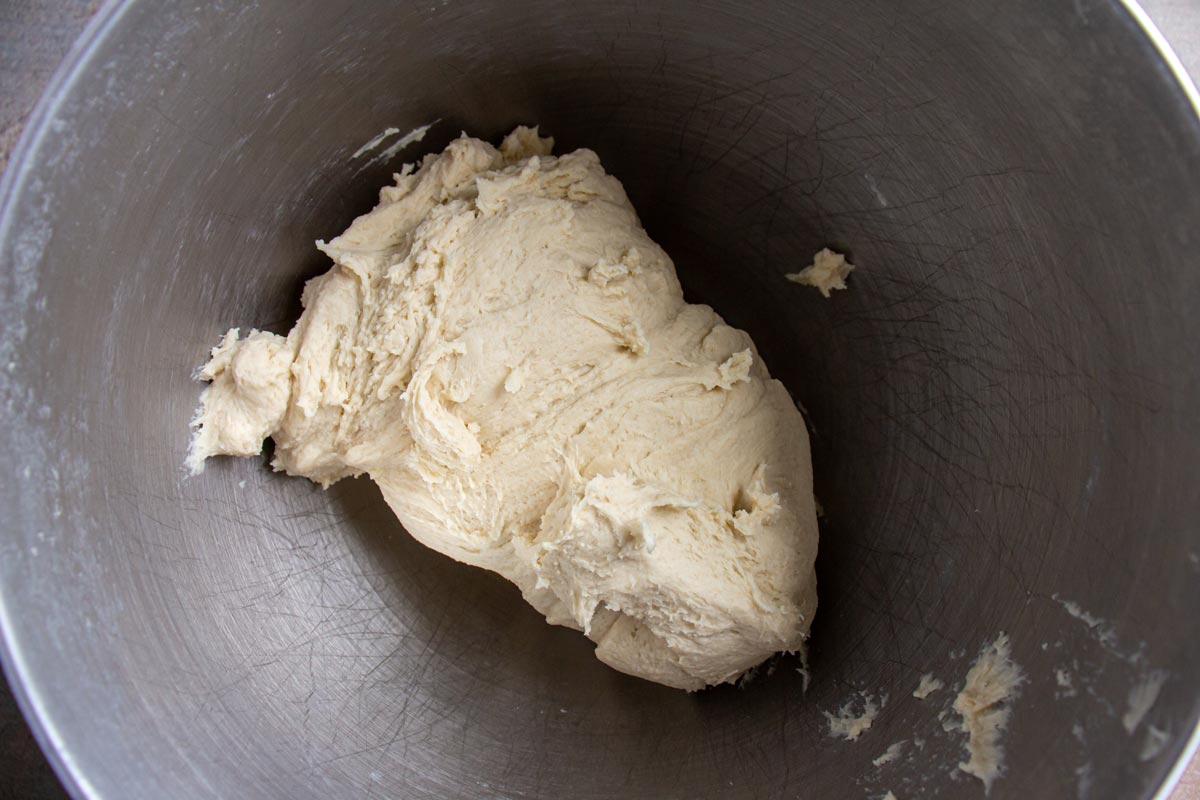
Cover with plastic wrap and let rest at room temperature for 30 minutes.
Line 2 baking sheets with parchment paper and dust with flour.
Cut off a chunk of dough about the width of 2 fingers and leave the rest covered with plastic wrap. On a lightly floured work surface, use your hands to roll the dough into a rope about ½ inch (12 mm) in diameter.

Cut the rope into ½- to 1-inch (12-mm to 2.5-cm) pieces (I recommend using a bench scraper).
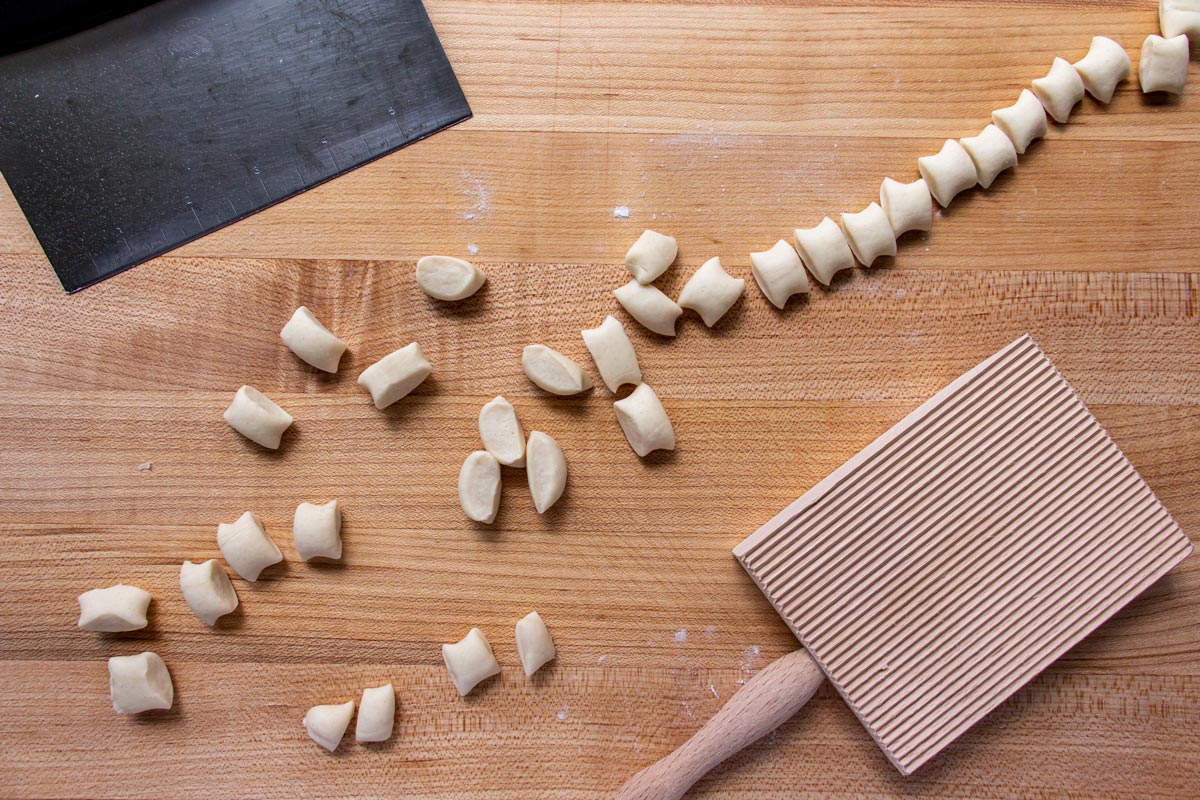
With the side of your thumb, gently push each piece against a gnocchi board or the back of the tines of a fork, rolling and flicking the dough to make a curled shape with an indentation on one side and a ridged surface on the other.
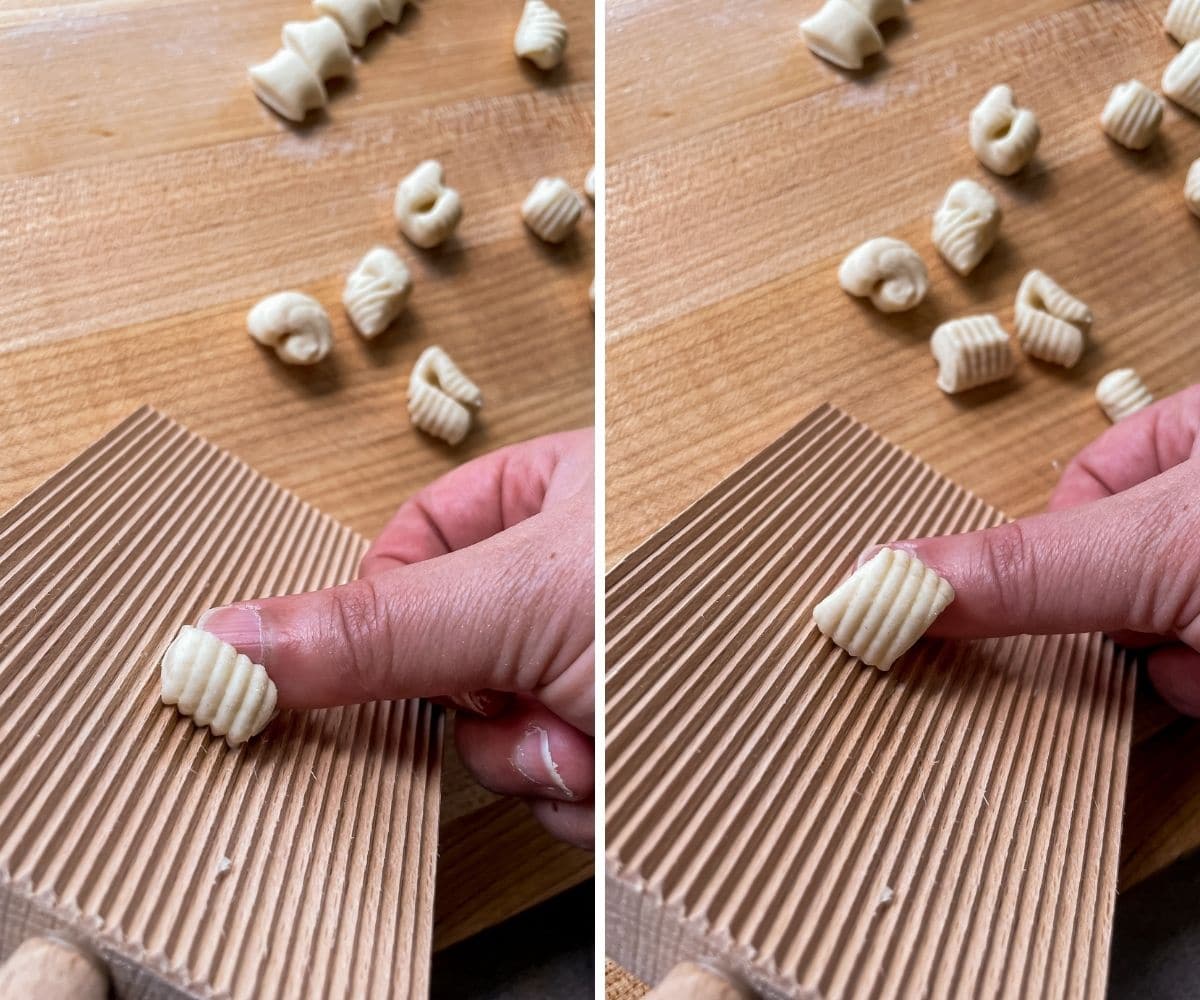
Repeat with the remaining pieces of rolled, cut dough.
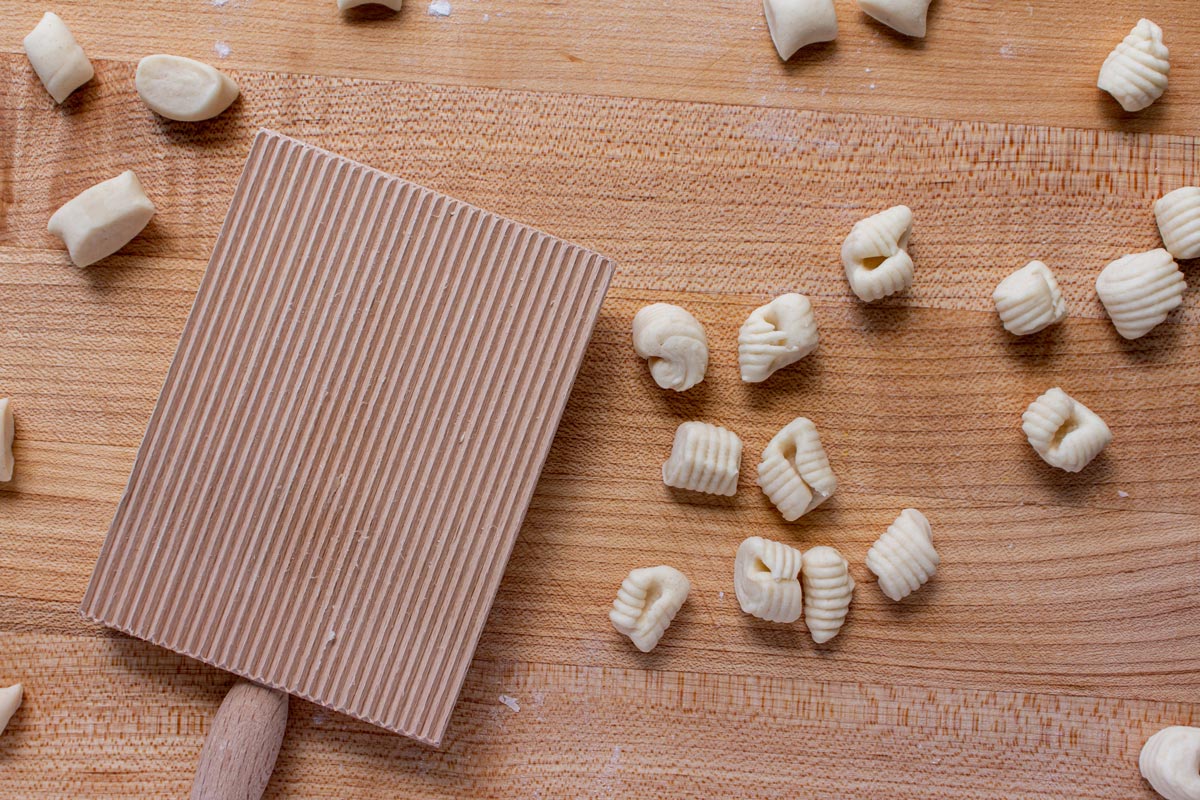
Arrange ricotta cavatelli in a single layer (not touching each other to avoid sticking) on the prepared baking sheets. Roll and shape the remaining dough.
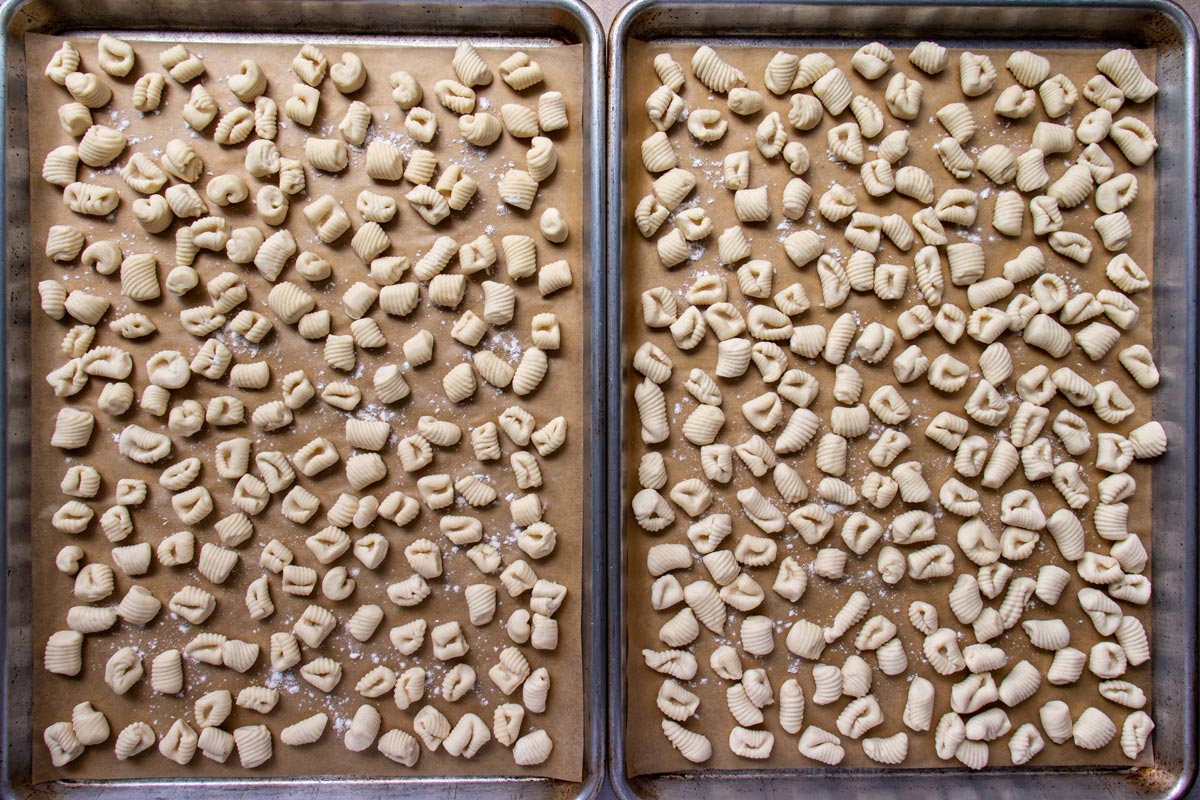
To cook, bring a large pot of generously salted water to a simmer over medium-high heat. Add the cavatelli and simmer until they float to the surface, 1 to 3 minutes.
Remove with a slotted spoon and finish with your choice of sauce. Serve immediately.
Please scroll to the bottom of the post for the full recipe (in a printable recipe card) including ingredient amounts and detailed instructions.
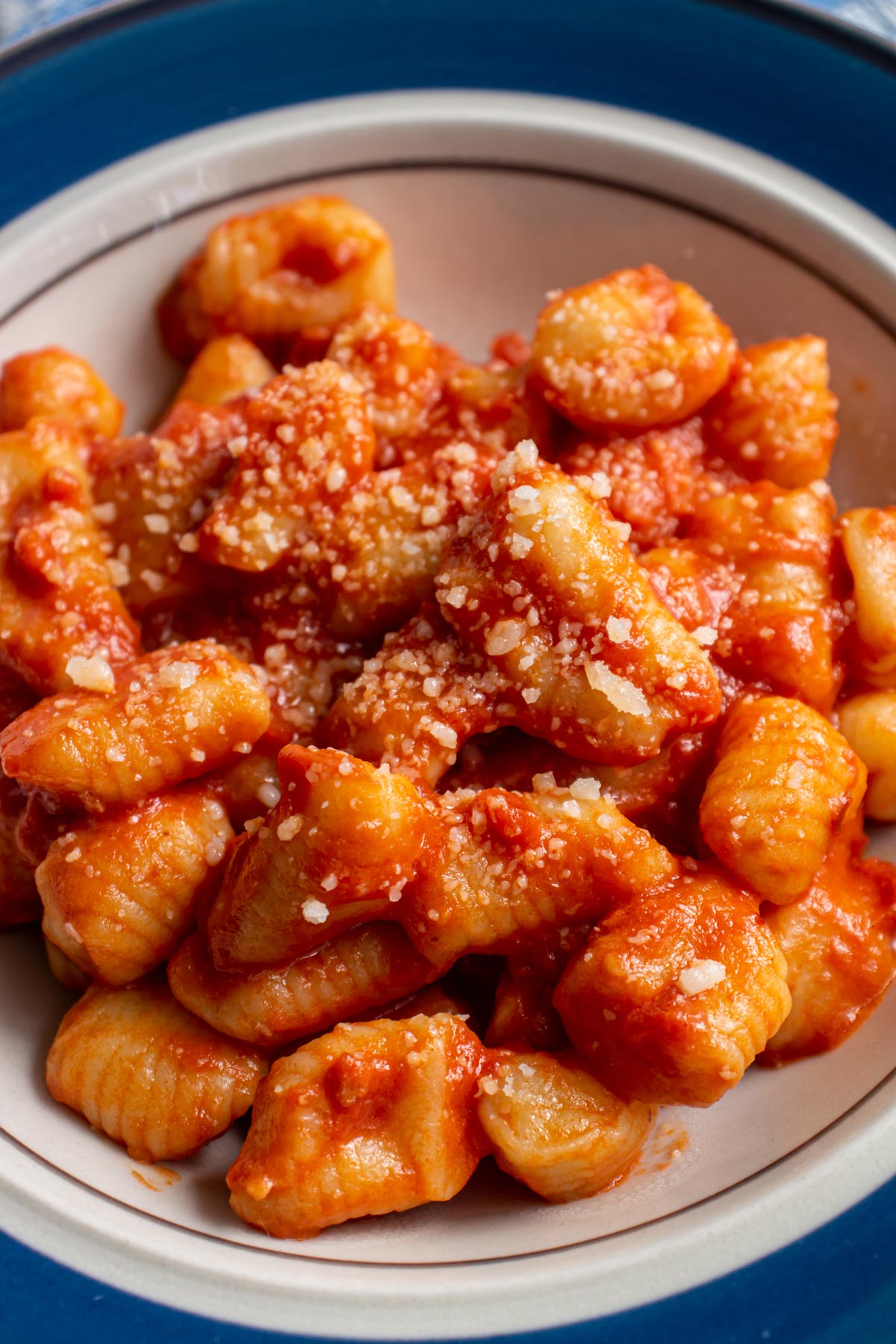
Expert tips
To store, refrigerate on the baking sheets, covered with plastic wrap, for up to 2 days. Or freeze on the baking sheets until cavatelli are frozen solid, then transfer to an airtight container or zip-top freezer bag. Use frozen ricotta cavatelli within 3 to 4 months. Do not thaw before cooking.
This recipe makes a lot of ricotta cavatelli. Portion sizes for gnocchi in general are a bit smaller than you'd anticipate because they can be quite filling, but use your own preference in doling it out to your friends and family.
The intended serving size of 8 for the recipe is fair (about 135 grams—uncooked—or 45 pieces of cavatelli per person), but you could spread it out a bit more heartily and serve 6 instead (about 180 grams—uncooked—or 60 pieces of cavatelli per person).
When rolling each piece of dough into a log, be careful not to incorporate too much more flour into the dough. Add just enough so the dough does not stick to the surface. Also, when rolling each piece on the gnocchi board, be sure to roll it with the non-cut surface against the board (it's dryer), otherwise it can stick to grooves in the board.
If you own a hand-crank cavatelli machine, you should be able to use it for this dough (though I haven't tested it myself since I don't own a machine). Be sure to follow the manufacturer’s instructions for forming them.
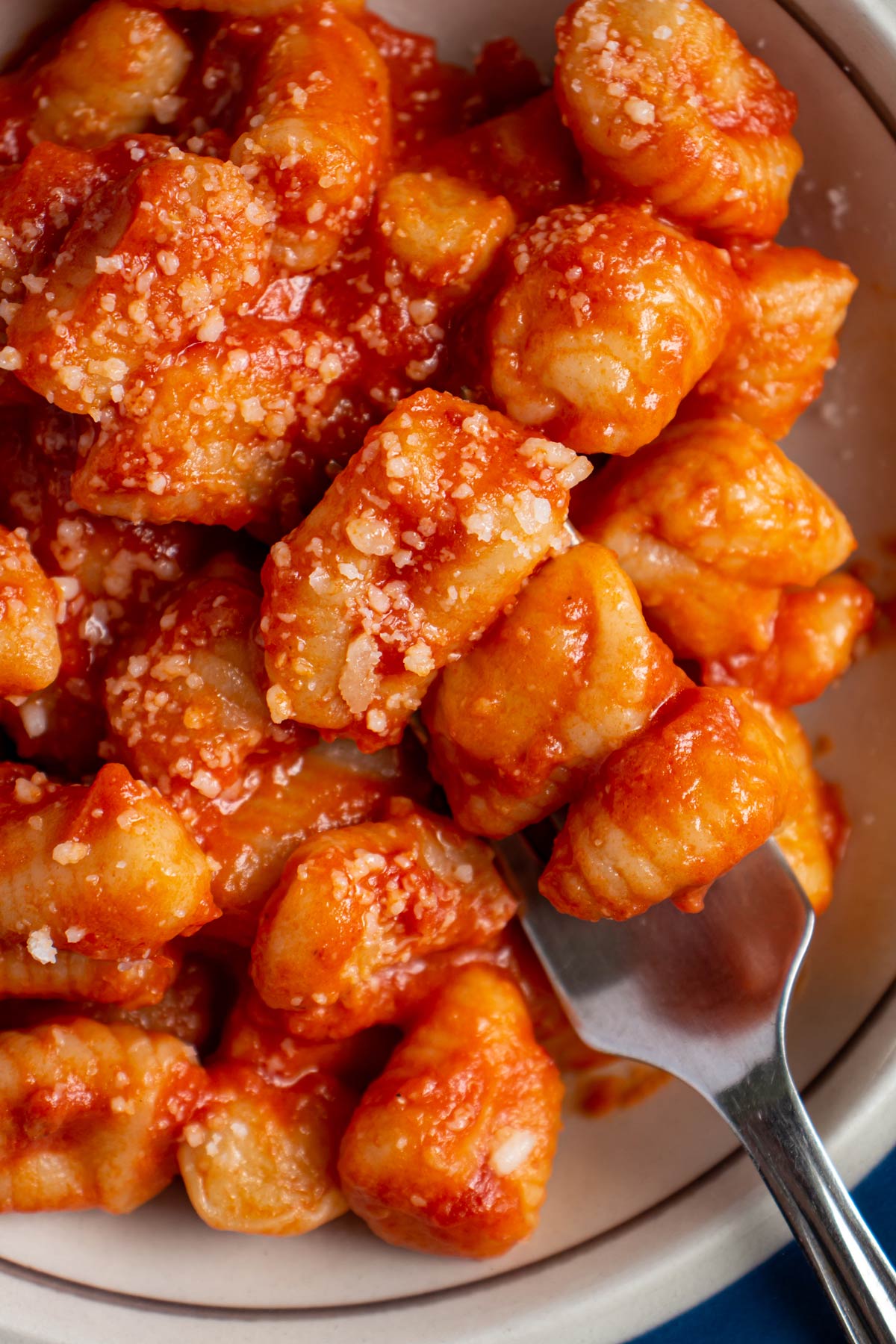
Other recipes you may like
- Gnocchi al Sagrantino all'Amatriciana
- Leniwe (Polish Lazy Pierogi Dumplings)
- Schupfnudeln (German Potato Noodles)
- Dunderi with Lemon and Butter
- Spinach and Ricotta Gnudi
- Pici (or Pinci) Pasta
- Browse all Italian recipes
Tried this recipe? Please leave a star ⭐️⭐️⭐️⭐️⭐️ rating in the recipe card below and/or a review in the comments section further down the page. You can also follow me on social media on Facebook, Instagram, and Pinterest!
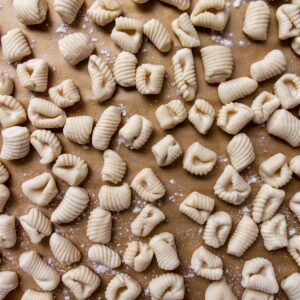
Ricotta Cavatelli
Ingredients
- 500 grams (4 cups) all-purpose flour, plus more for dusting
- 450 grams (1 pound) whole-milk ricotta cheese, store-bought or homemade
- ¼ cup milk
- 1 large egg
- 1 teaspoon kosher salt
Instructions
- In a large bowl or the bowl of a stand mixer fitted with a dough hook attachment, combine the flour, ricotta, milk, egg, and salt. Knead with your hands or on medium speed for 10 minutes, until fully combined and the dough is fairly smooth, but may still be a bit sticky. Cover the dough with plastic wrap and let rest at room temperature for 30 minutes.
- Line 2 baking sheets with parchment paper and dust with flour.
- Cut off a chunk of dough about the width of 2 fingers and leave the rest covered with plastic wrap. On a lightly floured work surface, use your hands to roll the chunk into a rope about ½ inch (12 mm) in diameter. Do not incorporate too much more flour into the dough, adding just enough so the dough does not stick to the surface.
- Cut the rope into ½- to 1-inch (12-mm to 2.5-cm) pieces. With the side of your thumb, gently push each piece against a gnocchi board or the back of the tines of a fork, rolling and flicking the dough to make a curled shape with an indentation on one side and a ridged surface on the other. Arrange cavatelli on the prepared baking sheets and shape the remaining dough. Make sure that the cavatelli don’t touch or they will stick together.
- To cook, bring a large pot of generously salted water to a simmer over medium-high heat. Add the cavatelli and simmer until they float to the surface, 1 to 3 minutes. Remove with a slotted spoon and finish with your choice of sauce. Serve immediately.
Notes
- To store, refrigerate on the baking sheets, covered with plastic wrap, for up to 2 days. Or freeze on the baking sheets until cavatelli are frozen solid, then transfer to an airtight container or zip-top freezer bag. Use frozen cavatelli within 3 to 4 months. Do not thaw before cooking.
- Cavatelli can be served with just about any sauce, including tomato sauce, meat ragù (meat sauce), pesto, brown butter, fonduta (cheese sauce), puttanesca sauce, amatriciana sauce, pink vodka sauce, and more.
- The intended serving size of 8 for the recipe is fair (about 135 grams—uncooked—or 45 pieces of cavatelli per person), but you could spread it out a bit more heartily and serve 6 instead (about 180 grams—uncooked—or 60 pieces of cavatelli per person).
- If you own a hand-crank cavatelli machine, you should be able to use it for this dough (though I haven't tested it myself since I don't own a machine). Be sure to follow the manufacturer’s instructions for forming them.
- Adapted from Pasta by Hand
Nutrition
*All nutritional information is based on third-party calculations and should be considered estimates. Actual nutritional content will vary with brands used, measuring methods, portion sizes and more.*

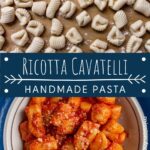
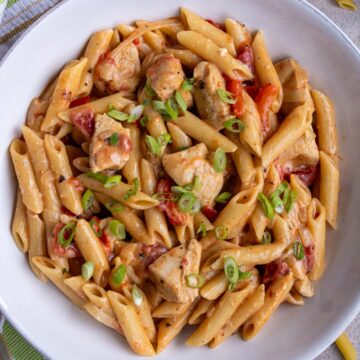



Comments
No Comments